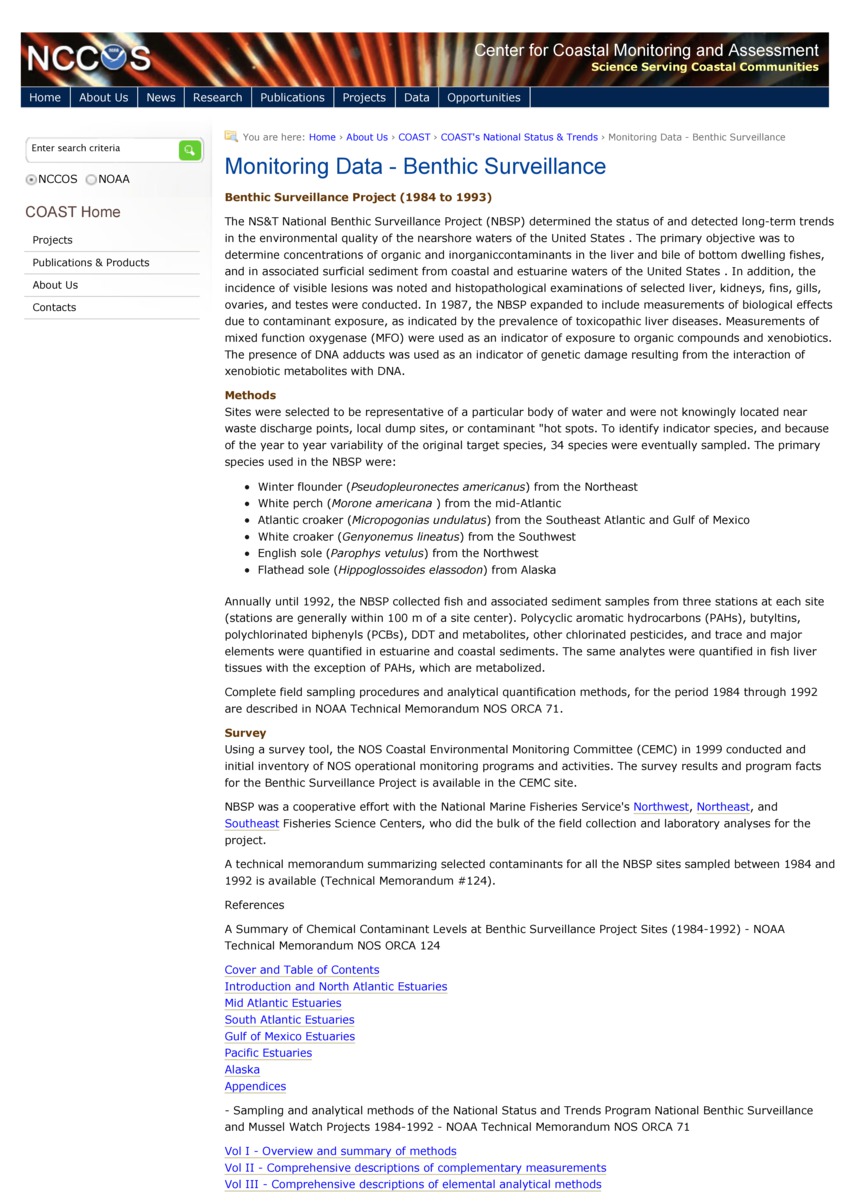Website
National Center for Coastal Monitoring and Assessment: Monitoring Data - Benthic Surveillance
The NS&T National Benthic Surveillance Project (NBSP) determined the status of and detected long-term trends in the environmental quality of the nearshore waters of the United States . The primary objective was to determine concentrations of organic and inorganiccontaminants in the liver and bile of bottom dwelling fishes, and in associated surficial sediment from coastal and estuarine waters of the United States . In addition, the incidence of visible lesions was noted and histopathological examinations of selected liver, kidneys, fins, gills, ovaries, and testes were conducted. In 1987, the NBSP expanded to include measurements of biological effects due to contaminant exposure, as indicated by the prevalence of toxicopathic liver diseases. Measurements of mixed function oxygenase (MFO) were used as an indicator of exposure to organic compounds and xenobiotics. The presence of DNA adducts was used as an indicator of genetic damage resulting from the interaction of xenobiotic metabolites with DNA.
Publisher - National Oceanic and Atmospheric Administration (NOAA)
Subjects - Stock Assessment; Macrobenthic invertebrates
http://ccma.nos.noaa.gov/about/coast/nsandt/benthic_surveillance.aspx
Citation: NOAA. 2007. National Center for Coastal Monitoring and Assessment: Monitoring Data - Benthic Surveillance. City: National Oceanic and Atmospheric Administration (NOAA). http://ccma.nos.noaa.gov/about/coast/nsandt/benthic_surveillance.aspx
